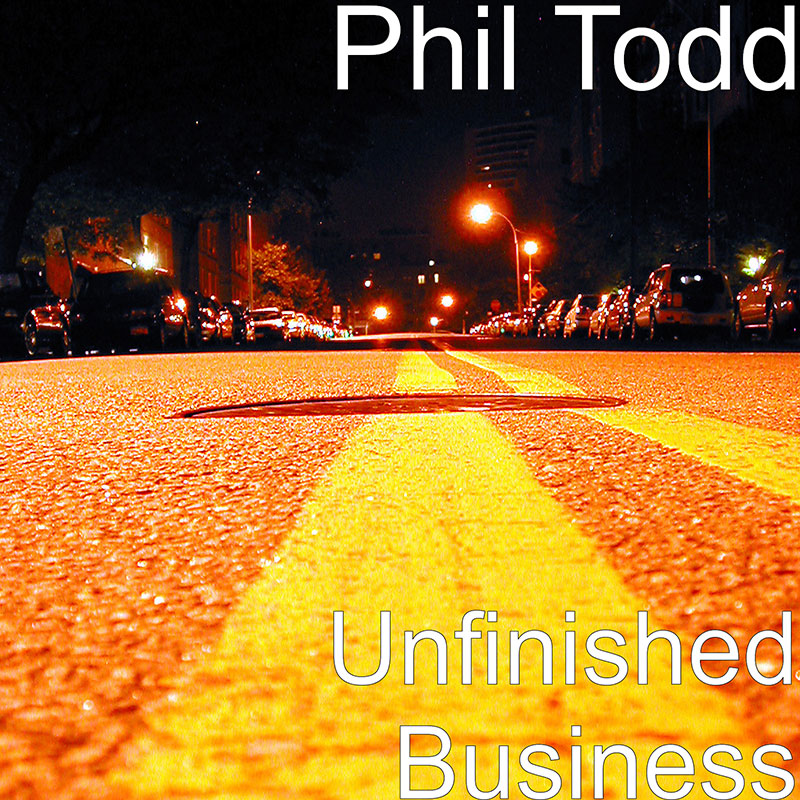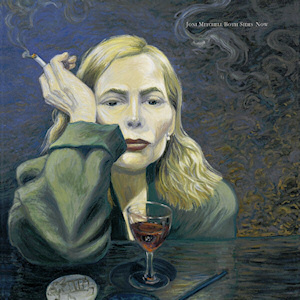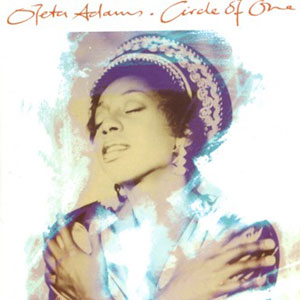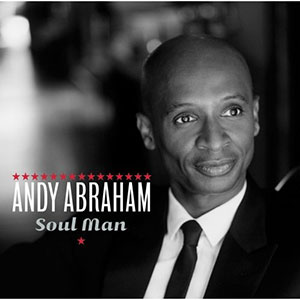Phil Todd
Saxophone · Flute · EWI
Phil Todd: Unfinished Business

- Funkenstein
- The Guru
- As the River Flows
- The Maverick
- Serenity
- Unfinished Business
- Voodoo Strut
- Shaman's Dance
- Fustration
- You Only Have to Please Yourself
- Son of Funkenstein
- The Last Hero
Personel
- Mark Wood Guitar (2, 7, 12)
- Justin Quinn Guitar (4, 9)
- Trevor Barry Bass Guitar (5, 6)
- Dave Arch Keyboard (2, 4, 5)
- Laurence Cottle Bass Guitar (2, 4, 7)
- Shan Chana Percussion (12)
- Alex Todd Drums (2, 4, 5, 7, 9, 12)
- All tracks mixed & mastered by Nick Todd
Sleeve Notes
I can guarantee that - unless you have been living under a rock with cotton wool in your ears - you will have heard Phil Todd. Not heard of him, necessarily, but his playing. If you have seen Sam Mendes' mega-box-office Bond outings, Skyfall and Spectre, George Clooney in the Fantastic Mr Fox, if you have watched Strictly Come Dancing, the Andrew Marr Show, been lucky enough to catch the Guy Barker Big Band or Colin Towns' Mask Orchestra or bought tickets for any number of West End shows that require a razor-sharp pit band, he's in the soundscape of all of them on flute, piccolo, clarinet, alto, soprano, tenor or baritone, as well as on the EWI less familiar (ee-wee, the Electronic Wind Instrument, of which more later). Phil is a "player's player", not a household name (and I suspect he likes it that way), but among those who work in the precarious business of professional musicianship, he is known for his versatility, incredible chops, musical curiosity and both a big sound that can bring a smile to your face and a lovely, gossamer touch when something more delicate required.
And I suspect many of those who know him from that setting will be very surprised indeed by his first solo album. Which is exactly what he expected.
Unfinished Business is many things: a long overdue personal expression by Phil, a love letter to the past, a roadmap of highways that were never built, a homage to mentors, a voyage of self-discovery and a calling card for the future. It is also, thanks to the involvement of Phil's sons Alex (drums) and Nick (mixing and mastering) very much a family affair.
The sound it celebrates is one that grabbed Phil the moment he heard it as young music tyro in a record shop with fellow National Youth Jazz Orchestra member trumpeter (and later composer and arranger) Guy Barker. Having heard and played all the bebop greats (Parker, Gillespie, Adderley) that were (and remain) the lingua franca of jazz schooling and finding none of it really spoke to his heart, it was a revelation when Barker insisted the man behind the counter (a semi-pro jazz drummer called Al Merritt) put on the first Brecker Brothers album ("When Michael Brecker took his first solo, I started crying," Phil says now). Then came the first David Sanborn and Tom Scott and The L.A. Express. "I listened to all three in their entirety in the shop, bought them and felt like I had discovered my people."
Not only were they his people, it turned out he was soon fluent in the language, with three years in Jeff Clyne's fusion band Turning Point which in 1981 led to him being talent-spotted by trumpeter Ian Carr and a ten-year stint with Ian Carr's Nucleus and subsequently the Ian Carr Group. "Ian was a fantastic influence on me. He was always a free spirit and he liked to surround himself with musicians who were willing and prepared to experiment and push the music forward. He gave me an enormous amount of freedom and I got up to all sorts of musical mischief. I went through an Evan Parker phase while I was with Ian and he didn't say a word." The Nucleus-esque track The Guru is dedicated to Ian.
Towards the end of his time in Nucleus another cornerstone of this album came into Phil's life - the EWI, basically a wind-powered synthesizer. He had already been experimenting with pedals and delays on regular wind instruments, but he first heard the EWI played by Michael Brecker on the Step's Ahead album Magnetic (1986). "I can still remember the tingling sensation when I heard In A Sentimental Mood and the slow build," he says. Interestingly, it was the "total expression" of an electronic instrument in the hands of Brecker than captivated him. "The ability to make something electronic sound organic completely blew me away."
After a little fancy footwork he managed to obtain a pre-release UK model from Akai, and set himself the task of mastering it in six weeks, in time to debut it live at the next Nucleus show (where it replaced the soprano on a couple of numbers). He recalls his wife Kim lifting off his headphones at five in the morning and observing wryly that he had finally found an instrument he could play 24 hours a day.
Not long afterwards, jazz-rock or jazz-fusion hit the buffers in terms of fashionability. Phil dates the sudden demise to the arrival of the first Wynton Marsalis Quintet with its retro-manifesto and the rush by players to form groups playing variations on bebop. That still wasn't Phil's language (although as Guy Barker and Colin Towns will testify, it certainly trips off his tongue when required).
So, he moved into the more commercial world of music, appearing on a dizzying array of '80s pop hits by Jaki Graham, Sinitta and much of the Stock, Aitken and Waterman output, coupled with regular film and television work.
He still used the EWI over the years, but found it was required to interpret other people's musical ideas or taking advantage of its many voicings, such as playing the second flute part, rather than its own (and his) solo voice. It was when he bought the EWI 4000 in 2010 that the idea of this album began to take shape. After all, he had unfinished business both with the instrument and the style of jazz that first inspired him ("Groove based music," as he puts it) that is currently being rediscovered by a new generation, such as DJ Gilles Peterson and an army of youngsters who have sampled Nucleus records.
You can hear both the electronic and acoustic incarnations of Phil Todd on the monstrously riffing opener Funkenstein, where the Creature and the Baron face off. But which represents the Monster and which the Creator in the battle between the EWI and the tenor sax? You'll have to decide.
Funkenstein is the sole creation (sadly in the studio, rather than a lightning-bleached castle laboratory) of Phil, but elsewhere you will hear him in the company of great players like Mark Wood (also a Nucleus alumnus) and Justin Quinn (whom Phil met, and was impressed by, when they were working on the Commitments) on guitars, the shape-shifting Lawrence Cottle on bass (his CV morphs from Black Sabbath to his own Big Band), Trevor Barry also on bass and Dave Arch (both Strictly colleagues) on keys, percussionist Shan Chana (who was guilty on a nightly basis of show-stealing Bombay Dreams) and Alex Todd on drums. There is (somewhere in there, once it has been processed by Phil's jazz sensibilities) evidence of his sons' love of heavy metal on Voodoo Strut, and the cinematic- all those soundtracks, you see - vision and the pull-out-all-stops-out climax of the closer The Last Hero. But above all, you'll hear the sound of a man relishing the freedom to make his own music at last.
This album doesn't just pick up and weave together threads from the past, it also charts a course for the future. With more material already written for further recordings and the man raring to get started on them, Phil Todd is now open for business.
Rob Ryan, Author and Jazz Fan !!
About Phil Todd
Born and brought up in Borehamwood, 15 miles north of London, I fell in love with a sound of the saxophone after hearing it on the radio. From that moment I knew I had to have one and at the age of 12 I become the proud owner of my very first sax.
The clarinet and flute soon followed and from the age of 14 I doing dance band gigs and rehearsal bands.
I studied music at Hitchin College for 2 years, and spent the next 3 at Trinity College of Music in London, where I studied the clarinet under the late, great John Denman. Simultaneously I was leading a second musical life having joined the National Youth Jazz Orchestra in 1973 and was a member of this great jazz learning ground and organisation until '77.
The late '70s and early '80s were a wonderfully rich jazz vein for me, playing with Jeff Clynes Turning Point, playing and studying with Michael Garrick, and being a member of Mike Westbrook’s Cortege ensemble, recording the album of the same name.
In '82 Ian Carr asked me to join his group Nucleus, and I jumped at the chance of playing with one of the countries great musical innovators and thinkers. That musical partnership lasted for the next ten years, but the close friendship and my gratitude to Ian is ongoing. He was, and is, my musical guru who encouraged me to embrace and develop my musical self, with actions rather than words, and by allowing me the musical space to experiment. He was a truly great man.
Around the same time as I joined Ian, I began to get calls for studio work. It was the time of the pop record brass section and sax solo! It seemed to be compulsory for every single in the charts at that time to have one or the other, or both, so who was I to refuse to help out and do my bit.
This led to calls for film soundtracks and TV show work, which meant I had to start doing some serious flute and clarinet practice again.
Practicing has never been a problem for me, it has always been one of my favourite activities, which is just as well, because being a multi instrumentalist there is a lot to work on.
Through the studio work I met Colin Towns, a great composer arranger with a truly innovative outlook on jazz. When he formed his Mask orchestra in the early '90s, I was very proud to be a part of it.
We did a few tours on the back of several CDs which Colin subsidised, which also gave birth to his record Label, Provocateur.
My love of music has continued to grow over the years, and I enjoy very much the inspiration different musical styles, ethnic or other wise, have on my own musical growth.
My collection of instruments has expanded because of this to include North Indian and Chinese flutes, recorders, harmonicas, and a shawm. However, I don’t claim to be able to play them all but I'm working on it.
Through my interest in all things flute, (ethnic and otherwise) I was invited to play on the last two James Bond films “Skyfall" and then “Spectre” as featured flute soloist playing the music of Thomas Newman. A truly wonderful experience.
I’m also very grateful to be involved on an on going basis with the "Strictly Come Dancing" tv band, how lucky am I to play with the best musicians in London, under the direction of Dave Arch.
Another great experience was being asked to play on Phil Collins 2010 album “Going Back” as well as the subsequent tour and live DVD. Getting to play all of those Tamla-Motown Baritone parts has got to be every Sax players dream.
After many years of happily playing other people’s music, I feel the time has come for me to contribute some of my own. So, as I continue to do what I have been doing, work wise, I shall be putting together a project, or two , of my own.
Discography
Anne Dudley
A Different Light
Saxophone

Will Young
Friday's Child
Flute Soloist

James Morrison
Undiscovered
Saxophone

Joni Mitchell
Both Sides Now
Clarinet, Flute

Westlife
Allow us to be Frank
Flute, Sax

Olita Adams
Circle of One
Sax, Brass, Soloist

Andy Abrams
Soul Man
Saxophone

James Leek
Say Something
Saxophone

My Equipment!
Saxophone
Selmer Series III black lacquer Soprano
Selmer Series II black lacquer Alto with silver Series III neck
Selmer Series II black lacquer Tenor with Steffen Bosken neck
Selmer Series II clear lacquer Baritone to low A
Benedikt Eppelshiem Eb Tubax
Flutes
Yamaha 81R Piccolo
Yamaha 411 Concert Flute with Arista 14k gold head
Sankyo Prima Alto Flute with silver head and Cooper Lip Plate
Yamaha 441 Bass Flute
Clarinets
Boosey and Hawkes Pre War 1010 with customised right hand mech
Wind Synth
Akai EWI 4000s
Ethnics
A large collection of North India (Bansuri), and Chinese Bamboo flutes in various sizes and pitches
Focal Dystonia
In the year 2000, I noticed a small problem with my right hand. I was finding it increasingly difficult to get a smooth coordination between my forth and little finger when playing the flute. It was getting harder to lift the fingers, as they seemed to only want to drop.
My first thought was, "not enough practise", so I spent as much time as I could trying to rectify the problem, but all that seemed to be happening was that it was getting worse.
At first it didn't seem to be affecting the clarinet or saxophone but within six months I was having the same problem with them. Now the alarm bells started to ring as I was finding it increasingly difficult to produce a smooth performance.
Playing jazz I could work around it, but having to read written parts started to become a real worry psychologically as well as musically.
What to do? I tried osteopathy and physiotherapy without success. I was referred by my GP to an orthopaedic consultant who specialised in hands. The outcome of this was a diagnosis of Focal Dystonia. My GP explained that it was a neurological rather than a mechanical problem and so he referred me to a neurological consultant who confirmed the diagnosis.
This consultant explained the meaning of focal dystonia.
Dystonia means the freezing of the muscles and Focal means localised. Therefore the muscles that control my forth and little finger were freezing when I was playing. This is because only a small percentage of the neurological impulses are reaching my hand.
For some reason they follow the path of the B roads rather the motorways therefore getting lost on the way. The consultant added that because the cause was not known there was no cure. However, with musicians this could be due to bad playing posture.
The only relief that could be offered was a form of temporary treatment ironically, botox injections. The botox acts as a muscle relaxant so by injecting it directly into the muscles in my forearm, there would be a chance that the muscles would relax enough for me to play normally.
However, there was no guarantee this would work and if it didn’t, it meant I wouldn’t be able to play at all until the injection wore off would could have been at least six months. The good news was that I would have the best looking forearm in London.
This was obviously not an option and though it was a struggle I could still play.
The specialist had told me that 25% of his patients were musicians and that mine was mild in comparison to a drummer who could no longer hold his sticks, or the trombone player who had it in his lips.
I realised I had to work a way around this problem. I revised my flute technique and had the right hand of my clarinet converted to covered hole. I devised a rather bizarre "flicking" action in my right hand forth and little finger for playing saxophone, not pretty but it works. The only real casualty has been the bass clarinet, the right hand little finger stack and the necessary stiffness of the action under the forth finger meant I had to give that instrument up altogether.
I have learnt to live with this rather unfortunate problem. All I ever wanted to do was play so not being able to was never an option. On reflecting upon the consultant’s comments on posture, I can see a possible cause for my dystonia but I can’t prove it.
Just before the problem started I had bought a new soprano saxophone, it sounded fantastic but there was a problem with the right hand thumb rest, it was too low down the instrument which therefore made me play with a very distorted and uncomfortable hand position particularly for my forth and little finger. My first thought was that I would practise to overcome the problem and by doing this I feel I taught my hand to work incorrectly. So much for first thoughts, I should have gone with my second thought which was to adjust the instrument to fit my hand.
If there is a moral to this story it is, that if an instrument is uncomfortable, change it to suit you. If it can’t be changed......sell it!
As an after thought if you're interested, having lived with this problem for six years and having tried many alternative therapies the only things I have discovered which have helped have been acupuncture, Tai Chi and Chi Gung. All of these work with the bodies' energy system of which nerve impulses are a part.
Unfortunately for me I have been unable to continue with Tai Chi as it aggravates an old back problem. I am continuing with the acupuncture and am now going to try yoga.
I wanted to bring the issue of Dystonia to a wider musical audience because pre-warned is pre-armed. If any of this rings true to you or anyone you know please feel free to get in touch, it needn’t be the end it can be a new beginning.
The EWI
My involvement with the EWI started in about 1987. As with many of us at the time our first exposure to it was hearing Michael Brecker playing it on the now famous Steps Ahead album “Magnetic”. Up to that point I’d been experimenting with putting the saxophone through multi-effects units with little success. Hearing Michael perform on the EWI made me realise that’s what I was looking for. There then followed an extensive search to try and get hold of one. At that time Nyle Steiner (the inventor) was custom making each one but I was informed that he had stopped manufacturing them. On further investigation I discovered that Akai had taken over production and were mass producing them, I then got in touch with Akai UK and through some creative negotiation I was able to get my hands on one of the first in the country. I then whole heartedly threw myself into the task of taming the unwieldy beast that is the EWI!!!!
(Infact just to show how determined I was I remember practicing with the headphones on only to have them pulled from my head and my wife saying to me "Phil, its 5 o’clock in the morning are you coming to bed or not? You’ve finally found an instrument you can play 24 hours a day").
My hard work and determination soon paid off as I was invited to become the EWI demonstrator for Akai UK. It also quite quickly became an integral part of my studio work life, fitting in particularly well with film scores. I ended up having a long and fruitful working relationship with the film composer Trevor Jones who particularly liked the EWIs potential.
With the introduction of the EWI 4000S the instruments potential has taken on a new lease of life, I’m enjoying the exploration of the larger sonic landscape that it provides and advancing its musical uses.




